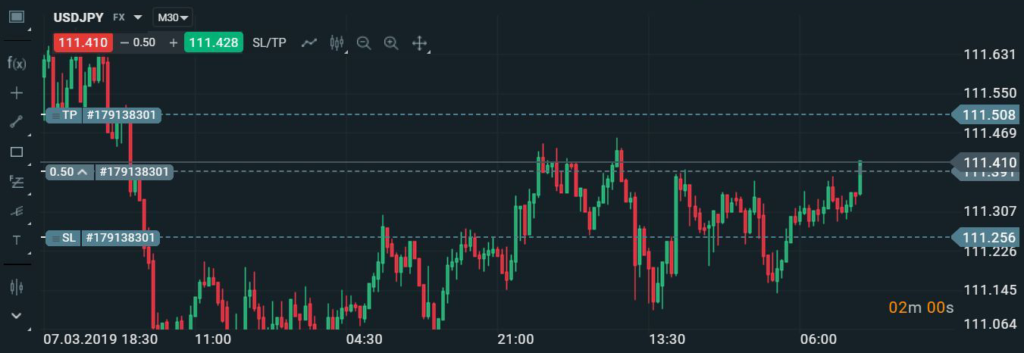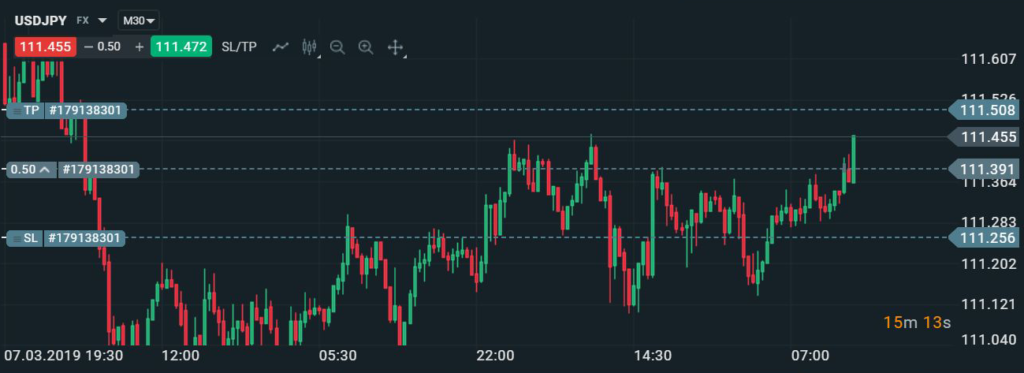Stop Loss - Whether and how to move? [Beginnings on the Forex market]
The fact that it's worth setting up a Stop Loss (SL) order is easy for everyone, even a novice trader. However, the key to success can be not only a good investment decision, but the right management of the SL order. Should and when should they be moved?
The place of setting the order limiting the loss, when the market goes in a different direction than we expected, depends on the investment strategy and the percentage share of relevant transactions. There are various schools: some traders focus on protecting a certain part of the capital invested (usually 2-5%; in a separate article, we describe how to manage capital), others set SL in the vicinity of resistance / support lines, many try to combine both methods.
Be sure to read: Everything you need to know about Stop Loss orders
So much theory, in practice it is often different. It may happen that our SL order is activated, then the market changes direction and the scenario we assumed when opening the position begins to materialize. Even at the most disciplined investor, the temptation arises to place the order of SL next time. But this is not the biggest problem. Because if such situations happen often, then we can really put SL too close and activate only by so-called market noise. Worse, when we start moving the SL order due to the changing price.
First error
Moving SL too fast in the direction the market is moving
A common mistake made by impatient investors is shifting the SL order "above the line" (the so-called break even point) as soon as there is a small profit. This is understandable in part, because thanks to this, the position will certainly not bring losses. Not worrying about the situation when such an order is quickly activated is recommended even by some authors of guidebooks that you have probably read. But are they right? Can a minimum profit bring positive results in the long run? If you have over 90% of successful trades, surely yes… The problem is that even the best can rarely boast such an efficiency, but in the long term, maintaining such profitability is extremely unlikely.
The second issue is the scale of income. This is not why you invest in Forex to make money as a bank deposit. If someone has such a high risk aversion, he should think whether this market really is for him. The risk premium must always be a high enough profit.
This is easily explained by a specific example. In the chart below we see the situation after opening a small position (0,5 lot) on a pair of dollar / yen. The space for raising SL and securing the minimum profit is enough, provided that we play in mode day-trading. Does it make sense?
The answer is another graph which clearly proves that it would be a mistake in this case. The upside candle was almost entirely negated by the downside. It was followed, however, by another - a much higher breakout, allowing the position to be closed at a much better price.
In practice, it turns out that it is equally important timing and the place of the transaction. Often it is this element that will determine the profitability of our investment and the decision to move SL to the "safety threshold". With the dilemma "Is it better to quickly secure the position or take a risk and wait " the answer is often… opening a position at a long-awaited, rational point. However, this is a topic for a separate article.
Second error
Shifting off an SL order when the price approaches
If we set the Stop Loss order on one level and move it further, we are gamblers, not investors, or even speculators. There are many translations of such proceedings:
- the momentum of traffic is running out, the moment is still going on and the market will turn back,
- the trend has not changed, just the correction will be bigger,
- it's a false assault.
How many investors, so many translations. They all have one thing in common: they have nothing to do with the truth. This one is simple: the sooner you admit your mistake, the better. The fact is, however, that errors can be different - from the place of the transaction, incorrect determination of the direction of the price change, too close / too far setting of the Stop Loss level, as well as inappropriate finding in the current market situation.
Nobody has 100-percent effectiveness, but most and above all regularly, those who can cut losses and wait patiently for the opening of the next position earn money.






















![Forex Club – Tax 9 – Settle tax on a foreign broker [Download the Application] Forex Club - Tax 9](https://forexclub.pl/wp-content/uploads/2024/02/Forex-Club-Podatek-9-184x120.jpg?v=1709046278)
![Trading View platform – solutions tailored to the needs of traders [Review] trading view review](https://forexclub.pl/wp-content/uploads/2024/03/trading-view-recenzja-184x120.jpg?v=1709558918)
![How to connect your FP Markets account to the Trading View platform [Guide] fp markets trading view](https://forexclub.pl/wp-content/uploads/2024/02/fp-markets-trading-view-184x120.jpg?v=1708677291)
![How to invest in ChatGPT and AI? Stocks and ETFs [Guide] how to invest in chatgpt and artificial intelligence](https://forexclub.pl/wp-content/uploads/2023/02/jak-inwestowac-w-chatgpt-i-sztuczna-inteligencje-184x120.jpg?v=1676364263)





![Izabela Górecka – “Success on the market depends not only on knowledge, but also on emotional stability” [Interview] Izabela Górecka - interview](https://forexclub.pl/wp-content/uploads/2024/04/Izabela-Gorecka-wywiad-184x120.jpg?v=1713870578)
![WeWork – the anatomy of the collapse of a company valued at $47 billion [WeWork, part II] wework bankruptcy story](https://forexclub.pl/wp-content/uploads/2024/04/wework-bankructwo-historia-184x120.jpg?v=1711729561)
![Adam Neumann – the man who screwed up Softbank [WeWork, part AND] adam neumann wework](https://forexclub.pl/wp-content/uploads/2024/04/adam-neumann-wework-184x120.jpg?v=1711728724)



![The most common mistakes of a beginner trader - Mr Yogi [VIDEO] Scalping - The most common mistakes of a beginner trader - VIDEO](https://forexclub.pl/wp-content/uploads/2024/03/Scalping-Najczestsze-bledy-poczatkujacego-tradera-VIDEO-184x120.jpg?v=1711601376)
![Learning patience: No position is also a position - Mr Yogi [VIDEO] Scalping - Learning patience - No position is also a position - VIDEO](https://forexclub.pl/wp-content/uploads/2024/03/Scalping-Nauka-cierpliwosci-Brak-pozycji-to-tez-pozycja-VIDEO-184x120.jpg?v=1710999249)
![When to exit a position and how to minimize losses - Mr Yogi [VIDEO] Scalping - When to exit a position and how to minimize losses - VIDEO](https://forexclub.pl/wp-content/uploads/2024/03/Scalping-Kiedy-wyjsc-z-pozycji-i-jak-minimalizowac-straty-VIDEO-184x120.jpg?v=1710336731)



![Stop Loss - Whether and how to move? [Beginnings on the Forex market]](https://forexclub.pl/wp-content/uploads/2019/03/stop-loss-przesuwanie.jpg)



![Building a risk management plan - How to do it? [Guide] risk management](https://forexclub.pl/wp-content/uploads/2021/12/zarzadzanie-ryzykiem-300x200.jpg?v=1639495023)
![Automatic Stop Loss on MetaTrader 5 - how to do it? [Video] auto-stop-loss-mt](https://forexclub.pl/wp-content/uploads/2021/11/auto-stop-loss-mt-300x200.jpg?v=1637831541)
![Stop Loss - Whether and how to move? [Beginnings on the Forex market] cryptocurrencies cheat](https://forexclub.pl/wp-content/uploads/2019/03/kryptowaluty-oszustwo-102x65.png)
![Stop Loss - Whether and how to move? [Beginnings on the Forex market] forex brexit pound](https://forexclub.pl/wp-content/uploads/2018/12/forex-brexit-102x65.jpg)










Leave a Response